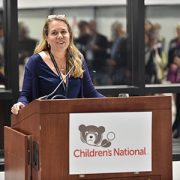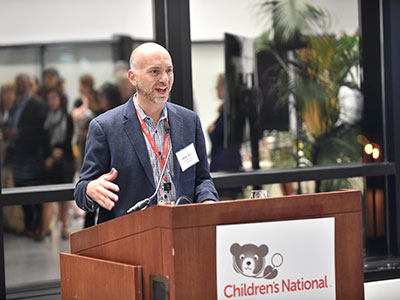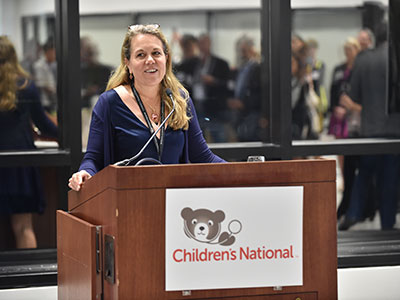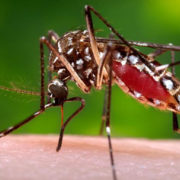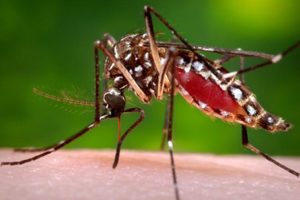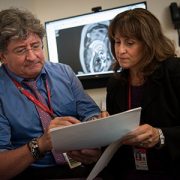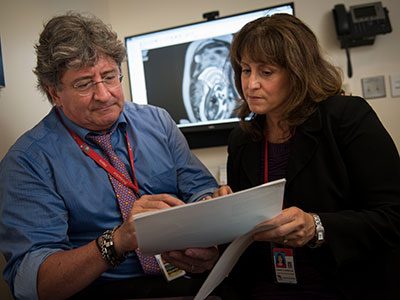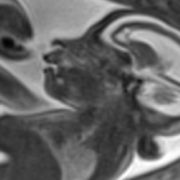New clues to detect rare pediatric cancers
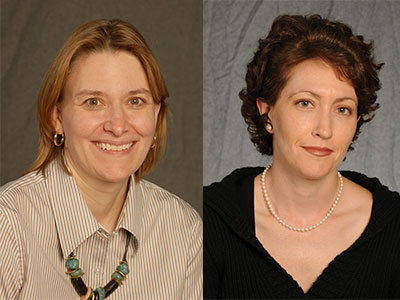
Using germline and tumor testing and centralized pathology review, a research team that included D. Ashley Hill, M.D, and Joyce Turner found that Sertoli-Leydig cell tumor and gynandroblastoma are nearly always DICER1-related tumors.
Children’s National Health System researchers played a key role in a new study exploring the clinical and genetic qualities of a group of rare, potentially deadly cancers that affect infants, children and adolescents. The research team’s findings suggest that genetic testing for people at risk may aid in earlier, more accurate diagnoses of these cancers, leading to early-stage treatment that could greatly improve survival.
Ovarian sex cord-stromal tumors (OSCST) include juvenile granulosa cell tumors (JGCT), Sertoli-Leydig cell tumor (SLCT) and gynandroblastoma (GAB). Mutations in the DICER1 gene often have been noted in children with these cancers, as well as in those with a particularly lethal pediatric lung cancer called pleuropulmonary blastoma (PPB). All of these cancers are highly curable if caught early but, at later stages, can be aggressive and often fatal.
Using germline and tumor testing and centralized pathology review, the research team found that SLCT and GAB are nearly always DICER1-related tumors. There also may be a much stronger association between SLCT and DICER1 than was previously appreciated. The new findings have implications for earlier detection and diagnoses of these cancers, as well as for screening other family members. The study was published in the December 2017 edition of Gynecologic Oncology.
“These types of tumors are diverse, relatively rare and understudied,” says D. Ashley Hill, M.D., the study’s senior author and a professor in the Division of Pathology and Laboratory Medicine at Children’s National. “Sertoli-Leydig cell tumor, for instance, is a unique genetic and pathologic entity and this rare cancer of the ovaries can be hard to detect. Using the testing process from this study, we now may be able to classify these tumors more accurately.”
The study authors assessed the first 107 individuals enrolled in the International Ovarian and Testicular Stromal Tumor Registry. They obtained medical and family history, and they conducted central pathology review plus DICER1 gene sequencing on blood and tumor tissue. Thirty-six of 37 patients with SLCTs and all four patients with GABs they tested showed DICER1 mutations, and half of those with SLCT had germline or mosaic mutations. The team noted that individuals with predisposing DICER1 mutations had significantly better overall and recurrence-free survival.
Based on their findings, the study authors recommend:
- Careful and ideally centralized pathologic review for all individuals with OSCST tumors
- DICER1 testing for all those with SLCT and GAB and
- Consideration of DICER1 testing for patients with other OSCSTs.
“Genetic testing may be useful for screening and diagnosing entire families if one family member tests positive for a DICER1 mutation, especially to determine if they are at risk for PPB. When we know who is at risk, we can protect all children in a family,” Dr. Hill says. “Ultimately we may be able to cure this deadly lung cancer, PPB, by identifying and performing computed tomography scans on people who are at risk, so we can catch these cancers early.”
Dr. Hill thinks future research may study children whose cancer was not detected early or has become resistant to chemotherapy. They also may explore ways to restore normal controls in cancer cells, so they follow normal paths of development, for the purpose of developing targeted treatments with fewer side effects than current therapies.
In addition to Dr. Hill, other Children’s National study co-authors include Amanda Field, M.P.H., Department of Pathology; Weiying Yu, Ph.D., Department of Pathology; and Joyce Turner, director of the Cancer Genetic Counseling Program in Children’s Rare Disease Institute.
Other members of the study team are experts from the International Ovarian and Testicular Stromal Tumor Registry, Children’s Minnesota, Washington University Medical Center, Carolinas Health Care System, University of Texas MD Anderson Cancer Center, Harvard Medical School, University of Colorado School of Medicine, Clinic of Pediatrics (Dortmund, Germany), National Cancer Institute and Dana-Farber Cancer Institute.
Research reported in this story was supported by the National Institutes of Health under award number NCI R01CA143167, The Parson’s Foundation, St. Baldrick’s Foundation, Pine Tree Apple Tennis Classic Foundation, Hyundai Hope on Wheels, the Randy Shaver Cancer Research and Community Fund, the German Childhood Cancer Foundation and the Intramural Research Program of the Divisions of Cancer Epidemiology and Genetics, National Cancer Institute.



